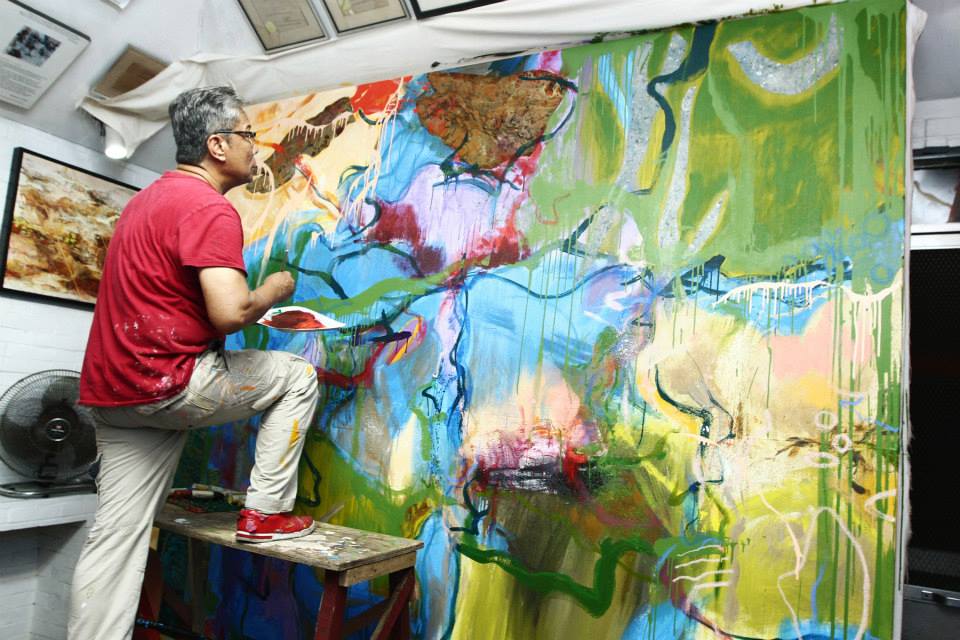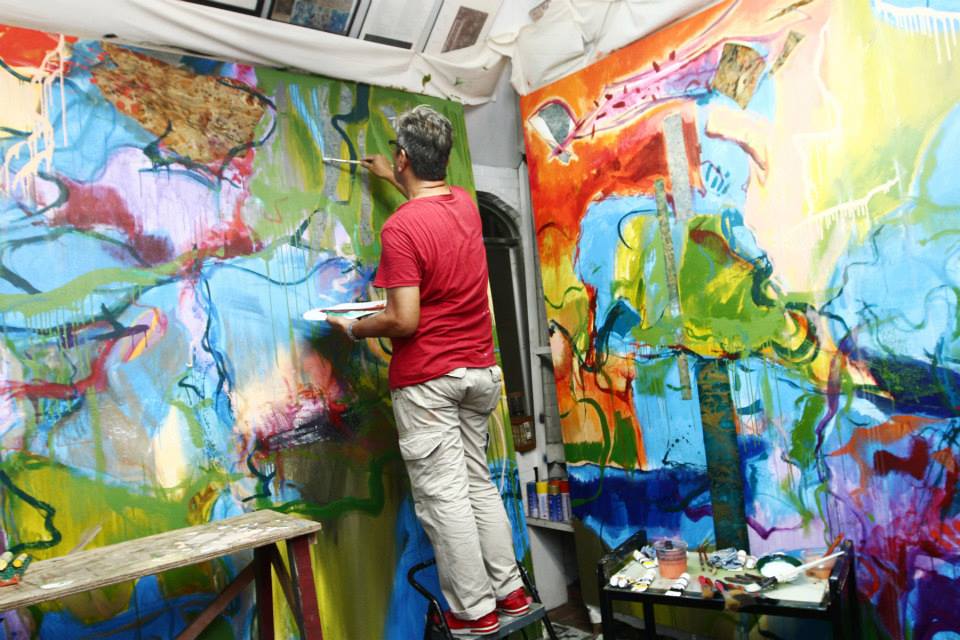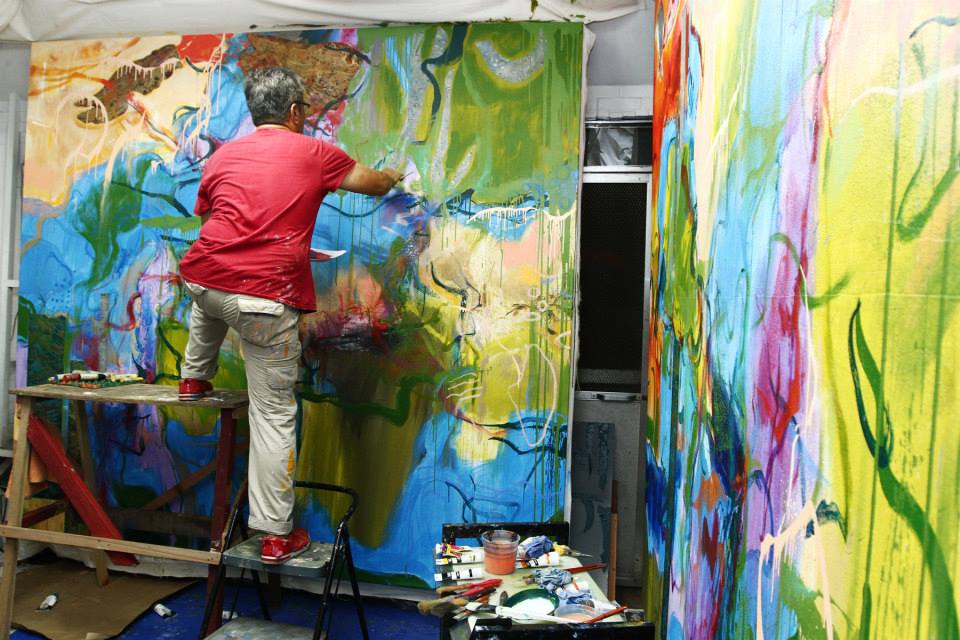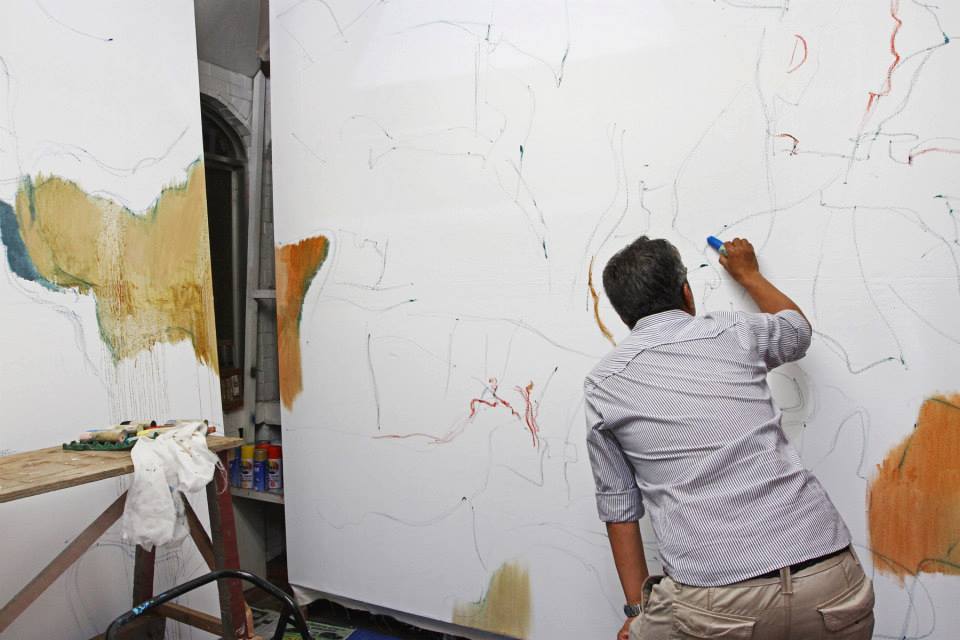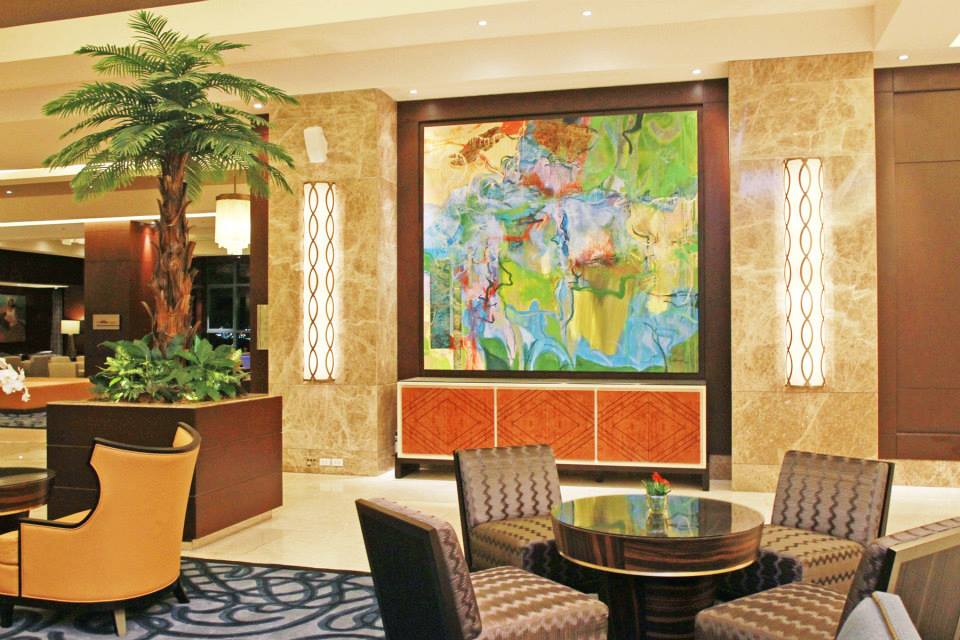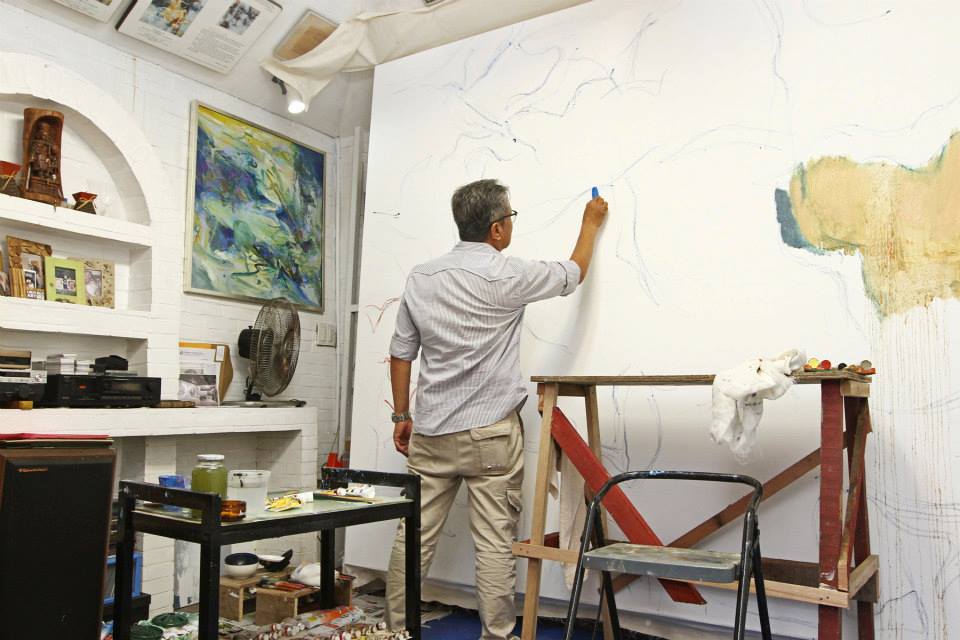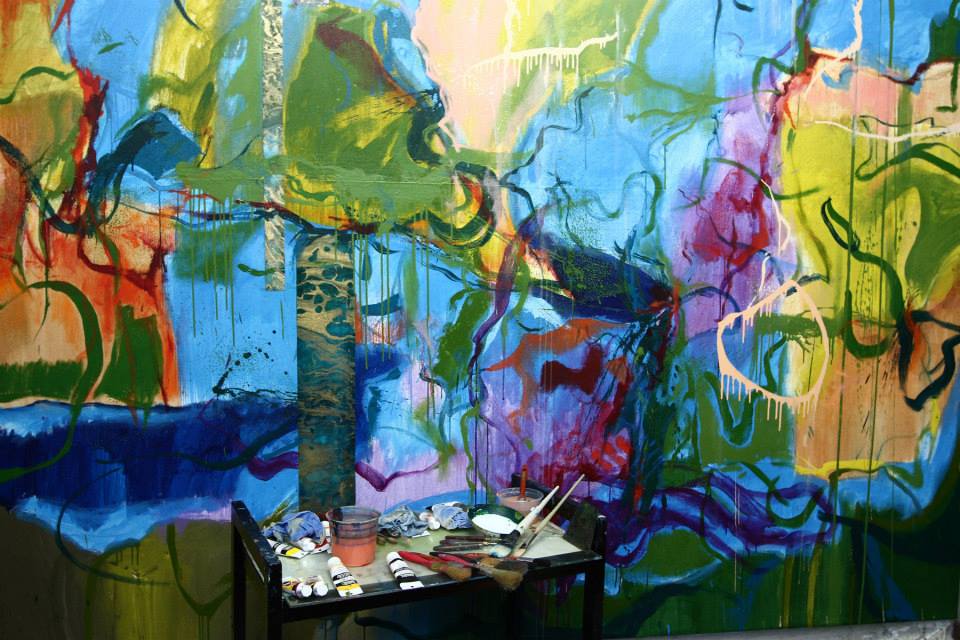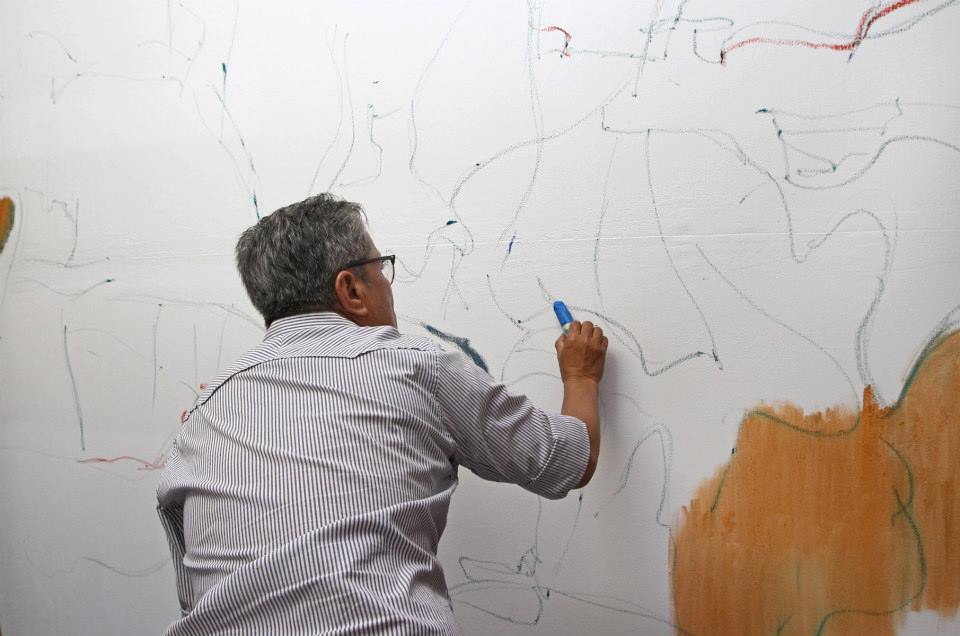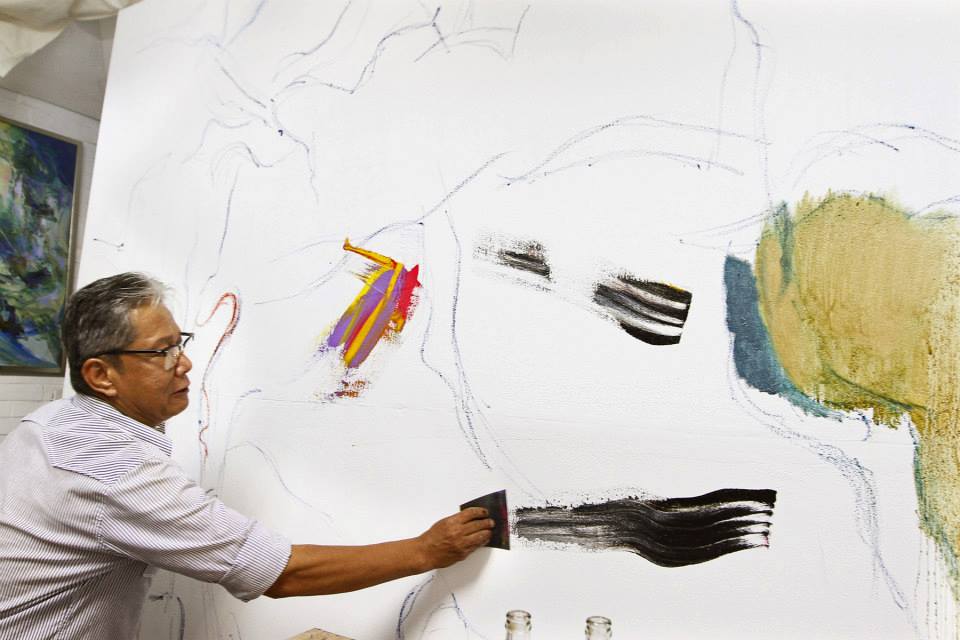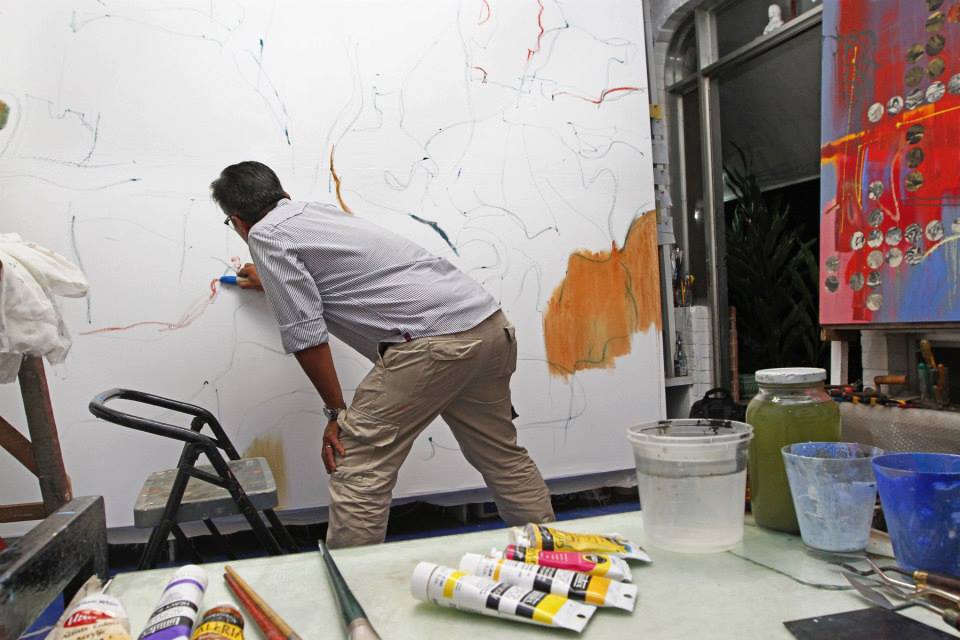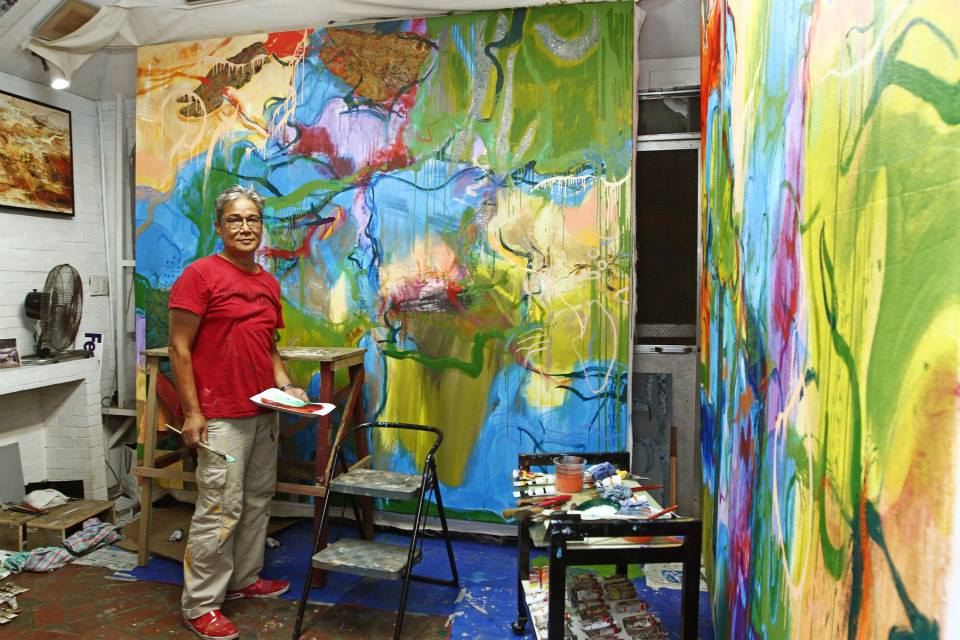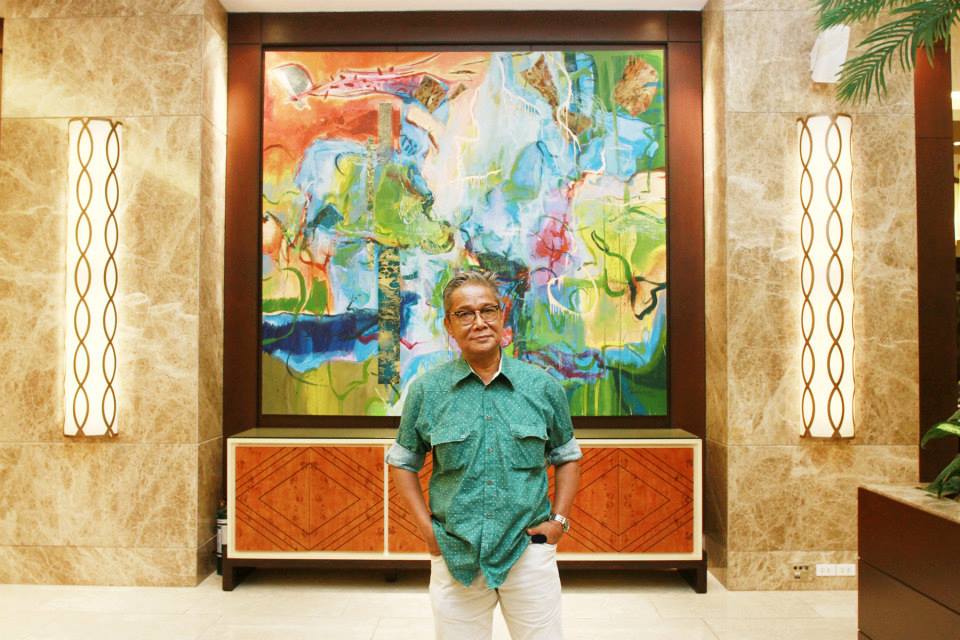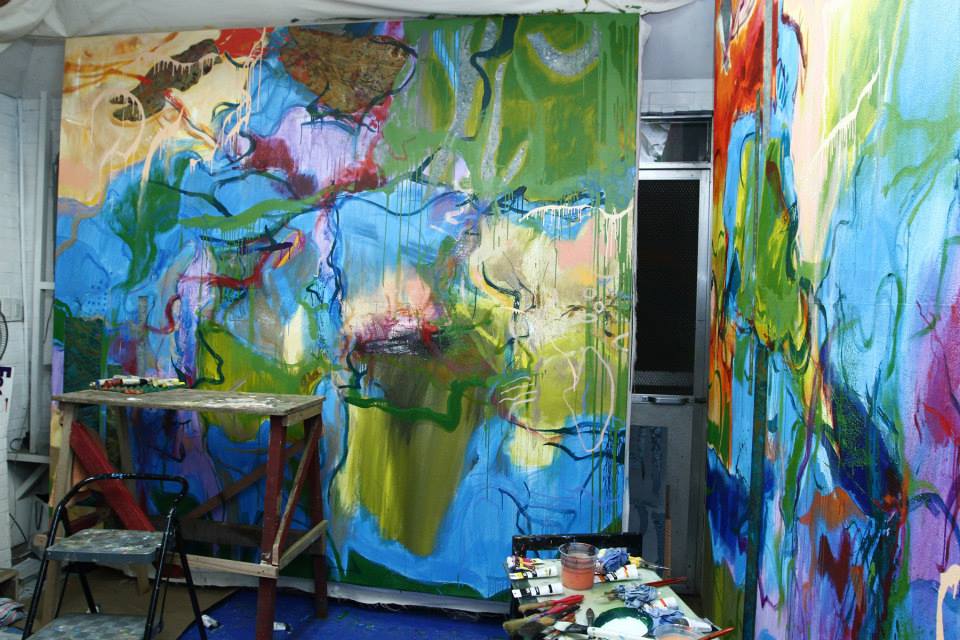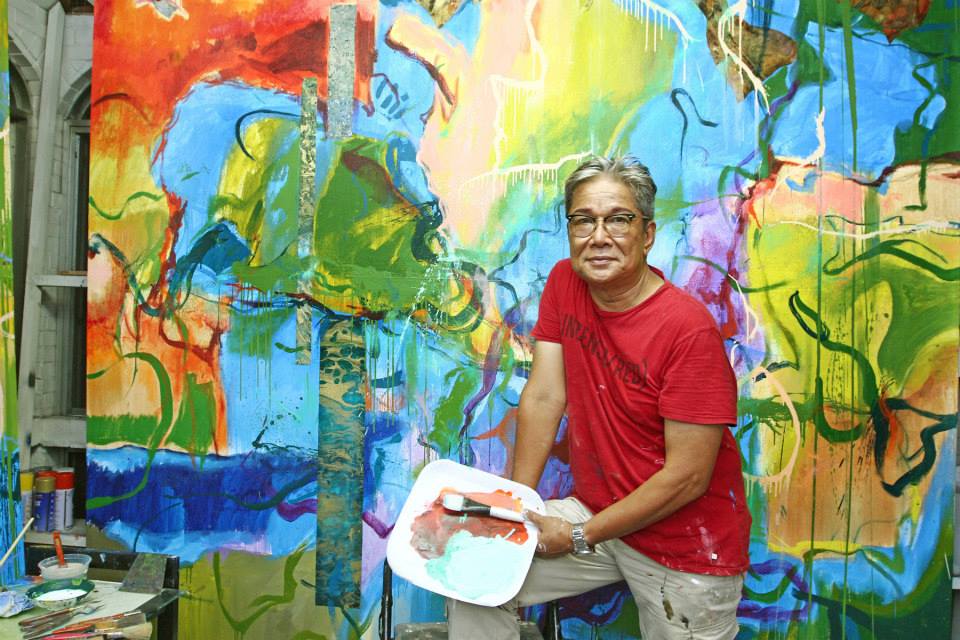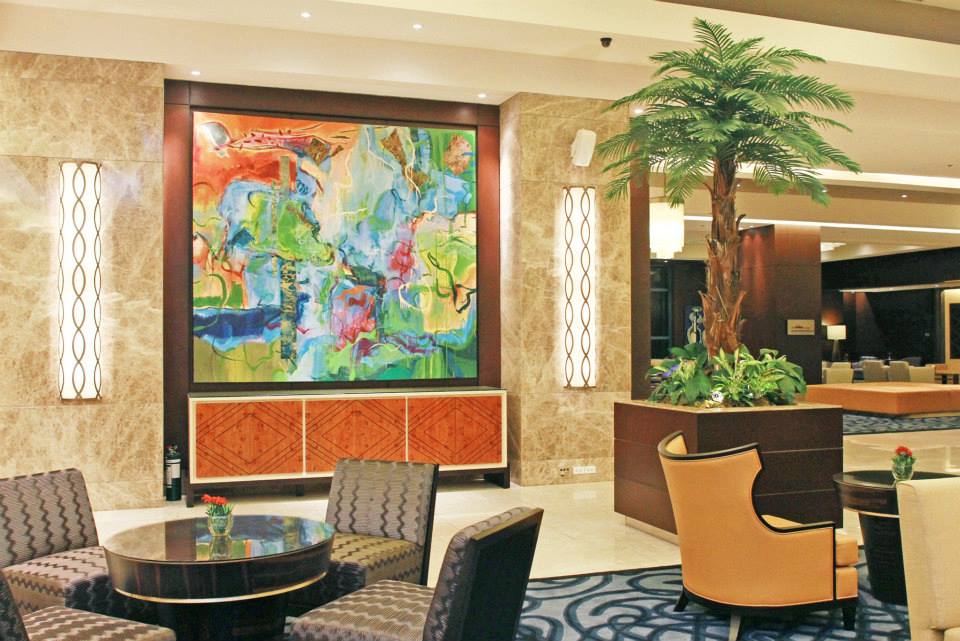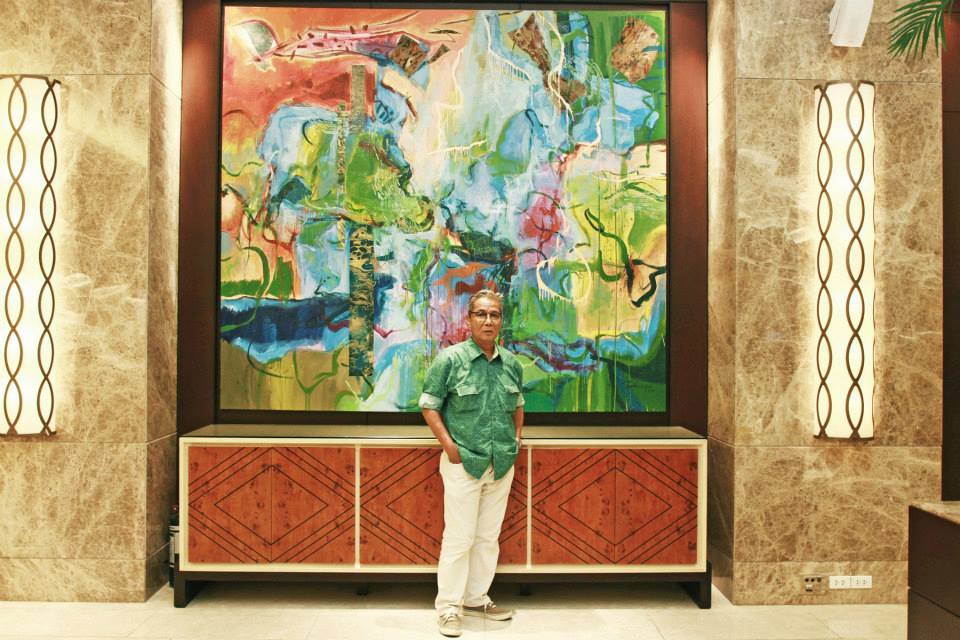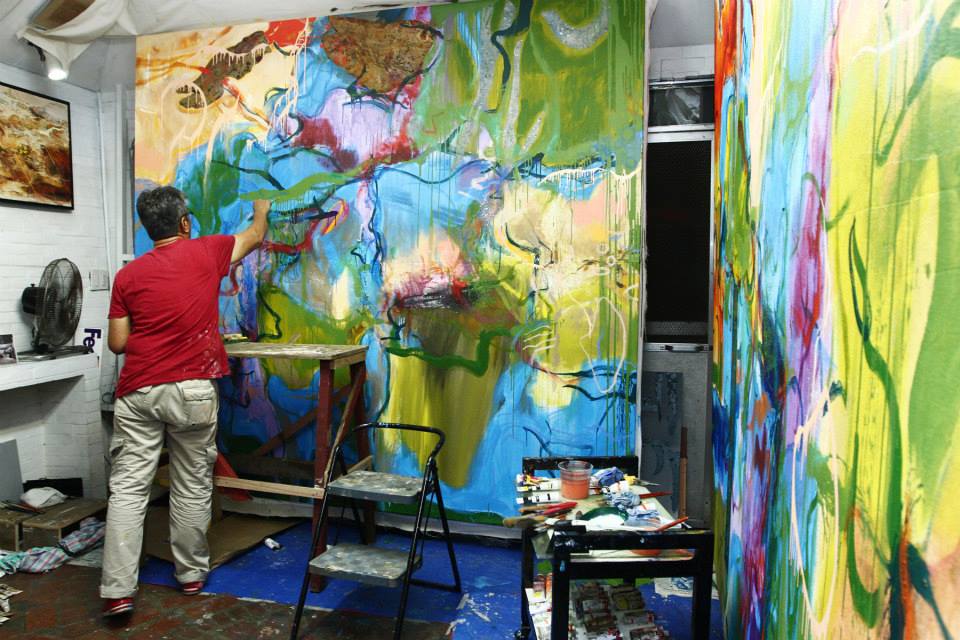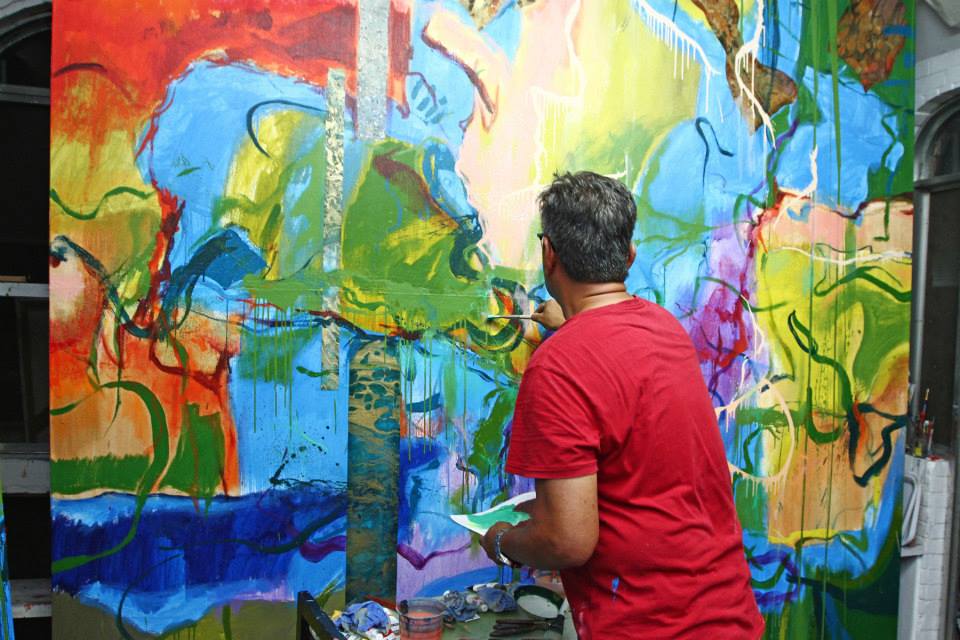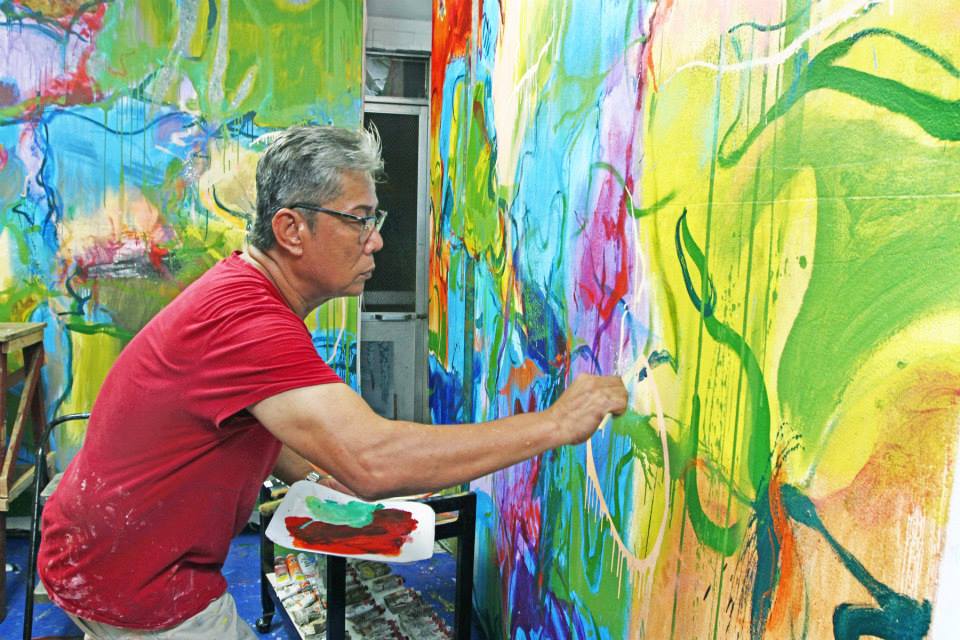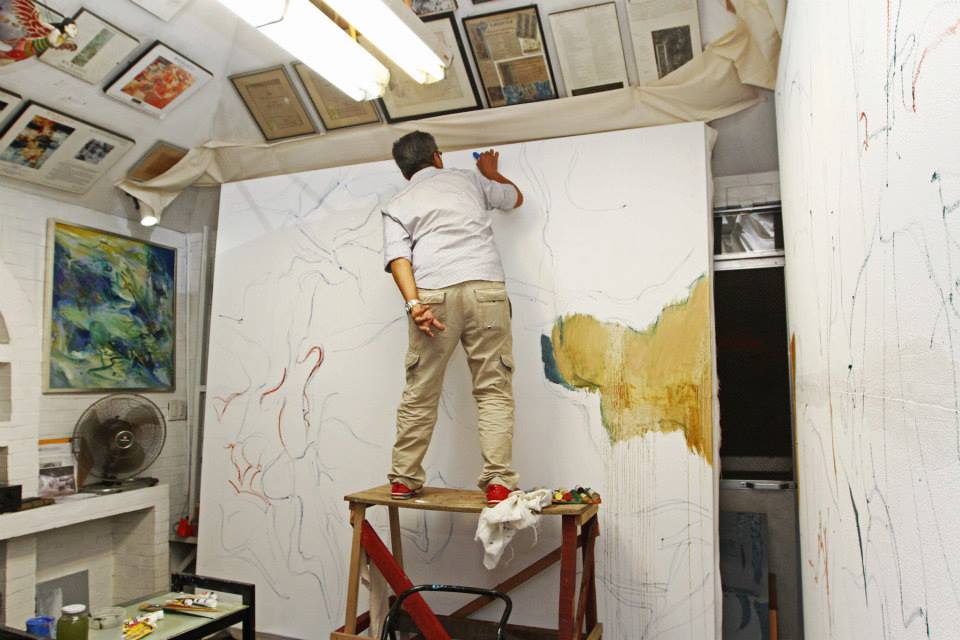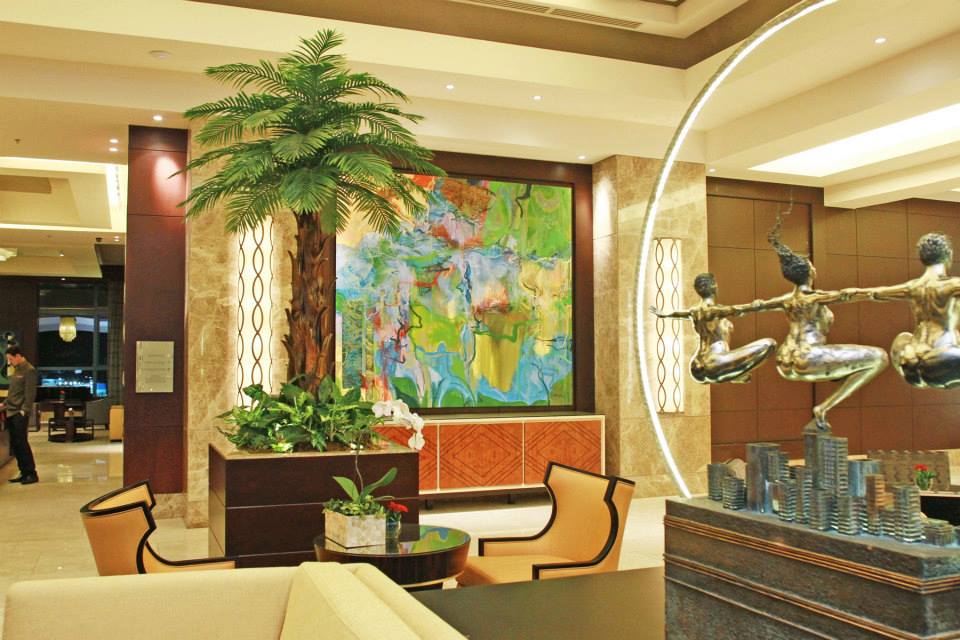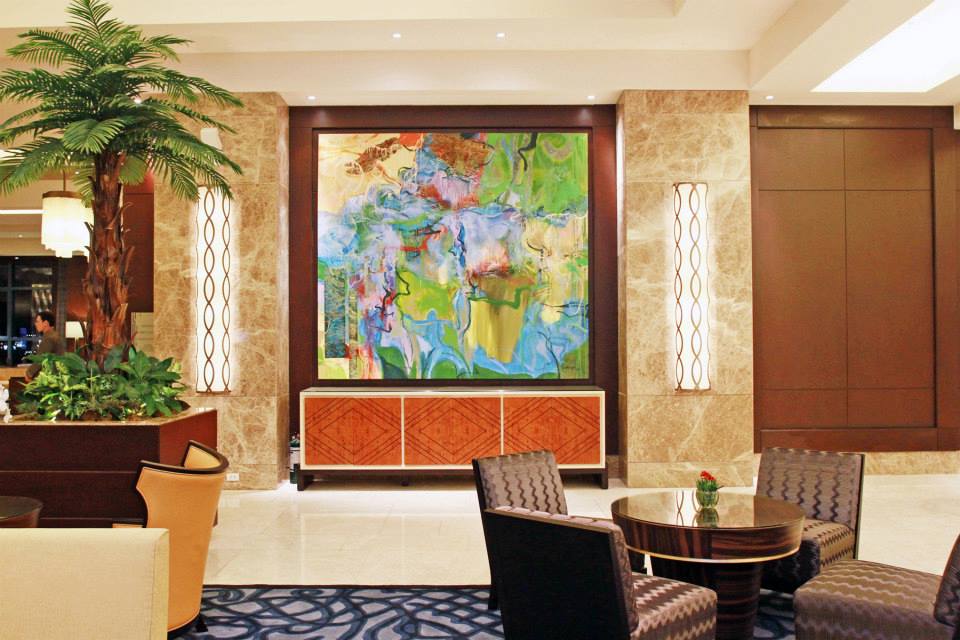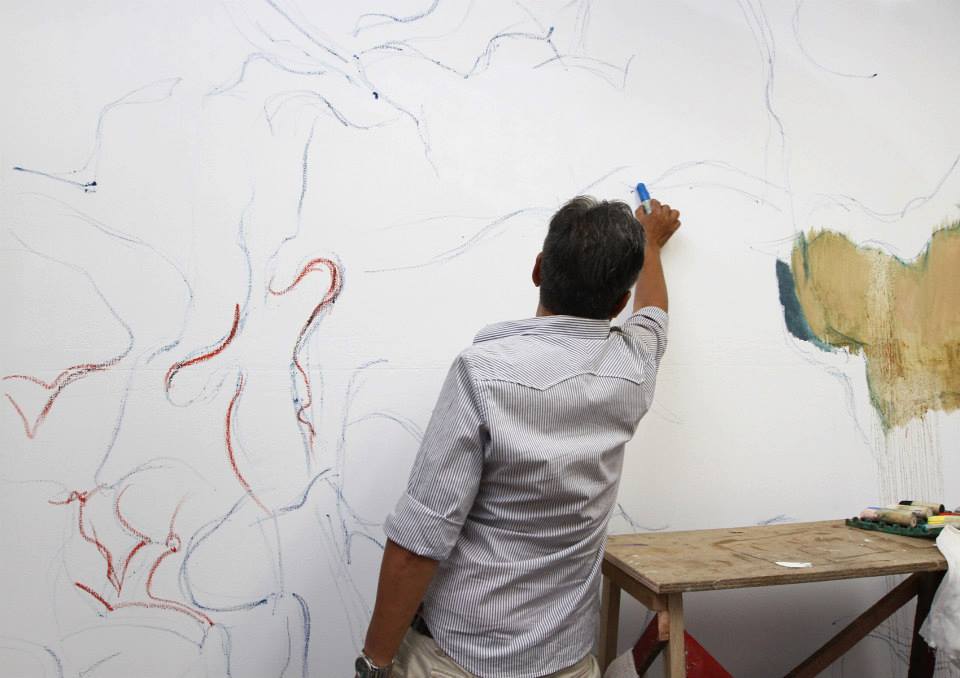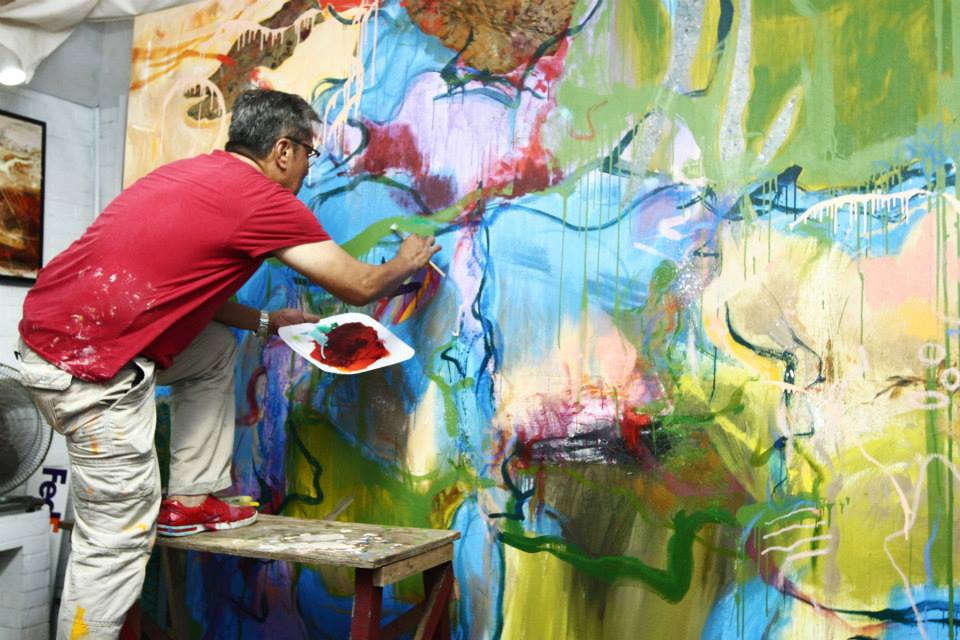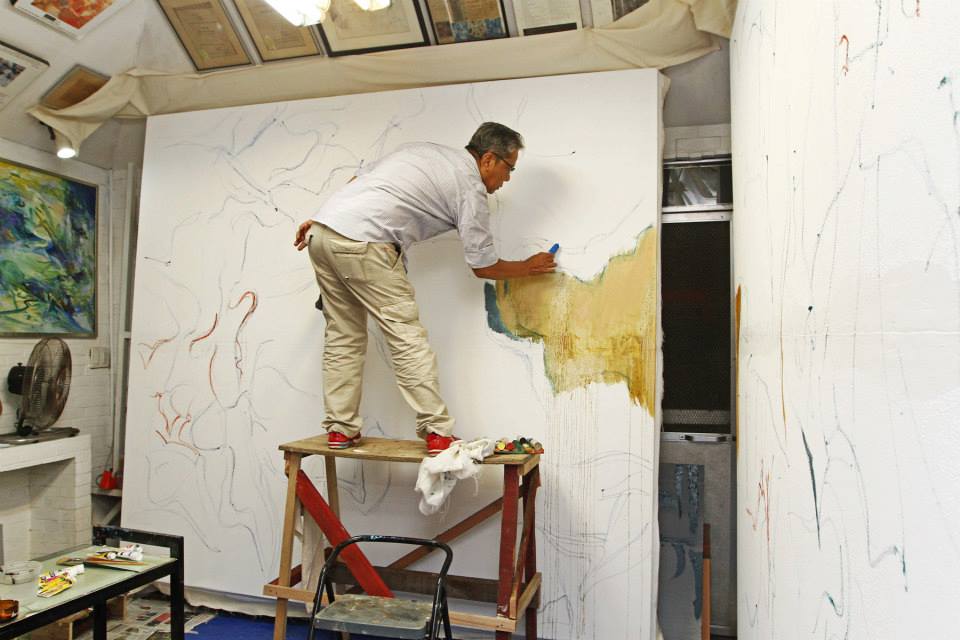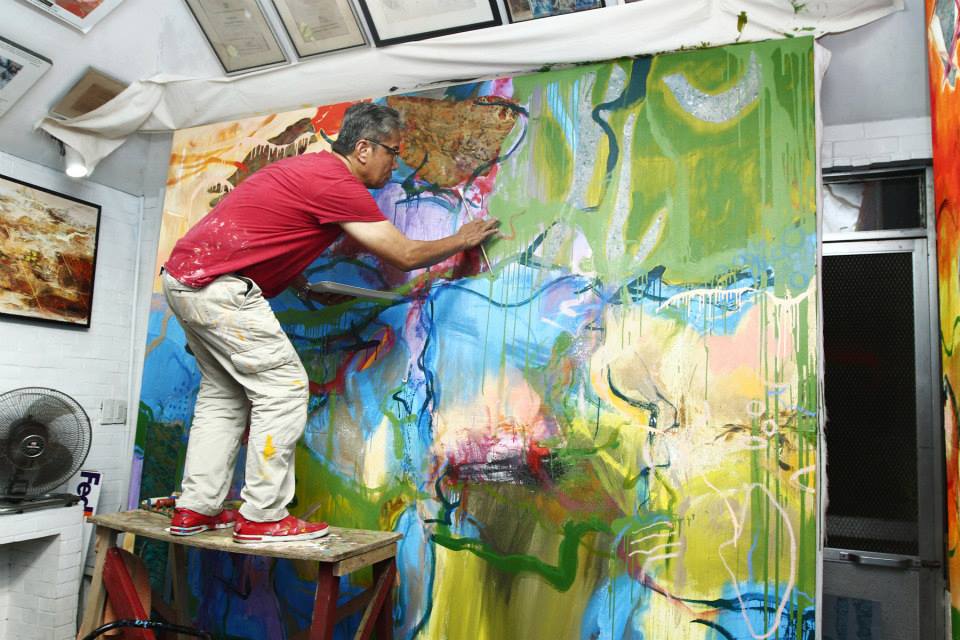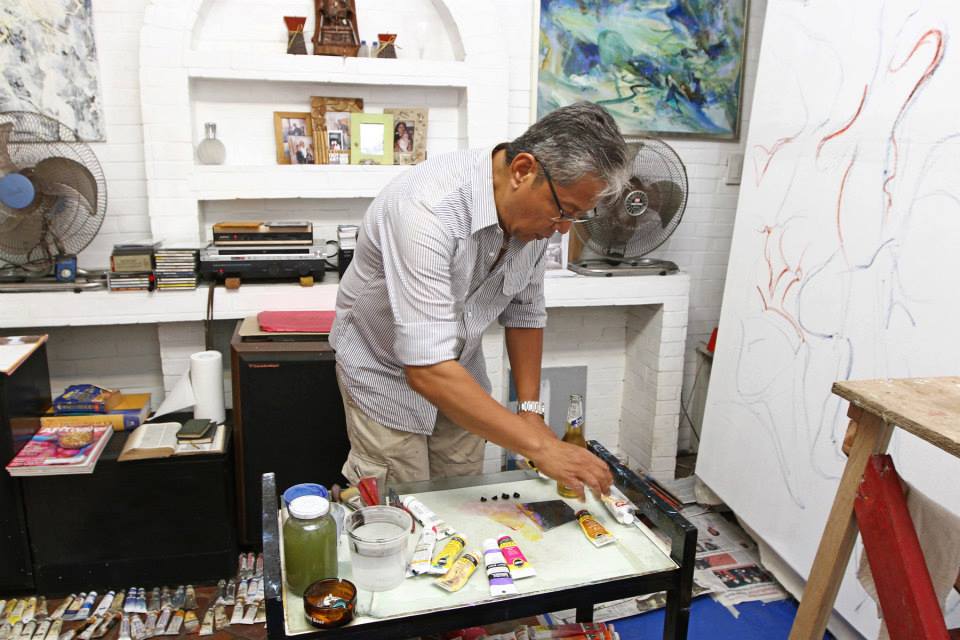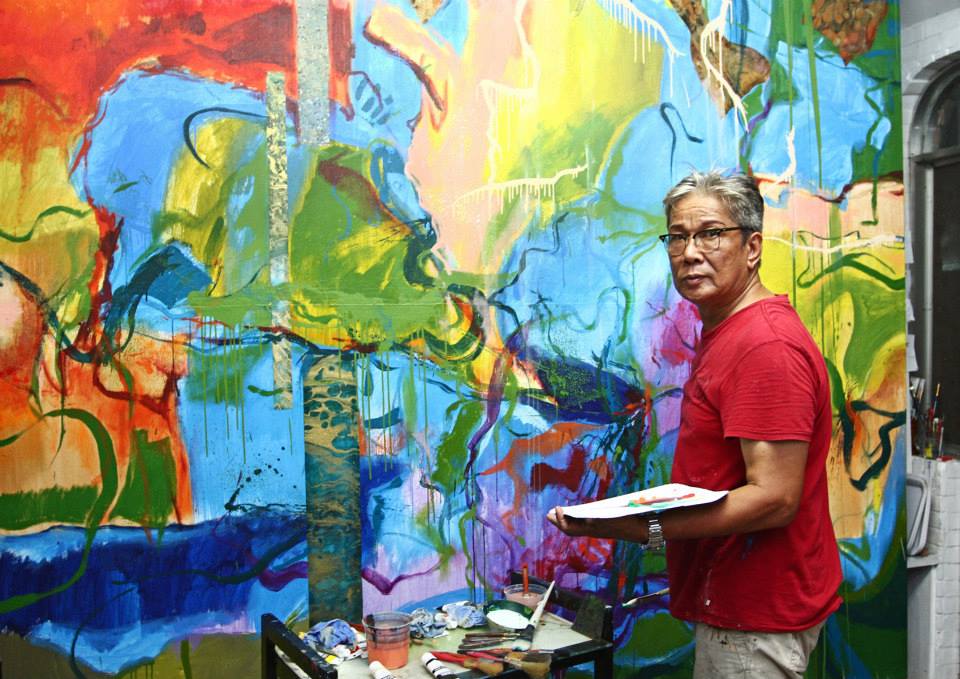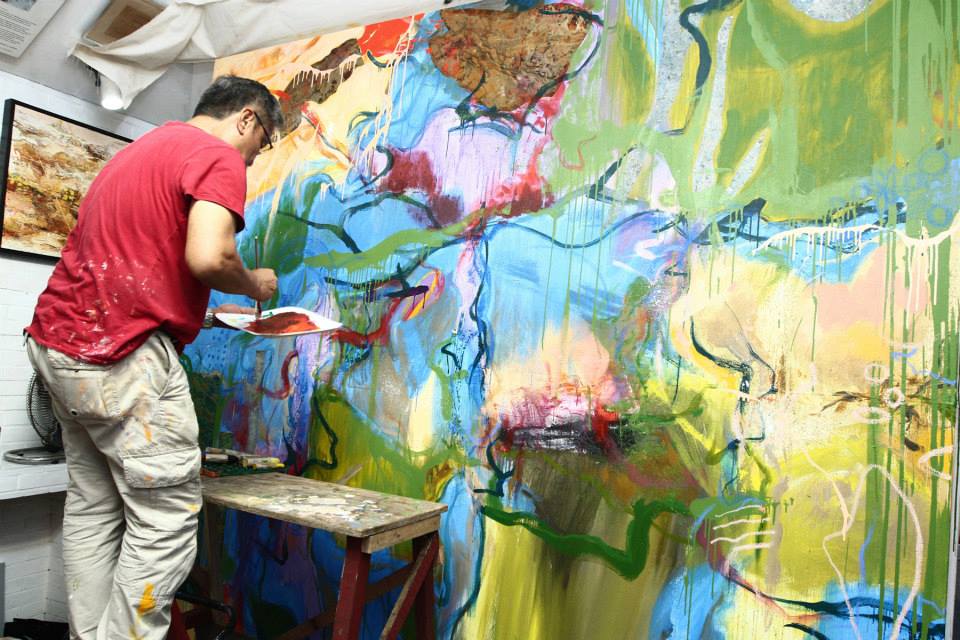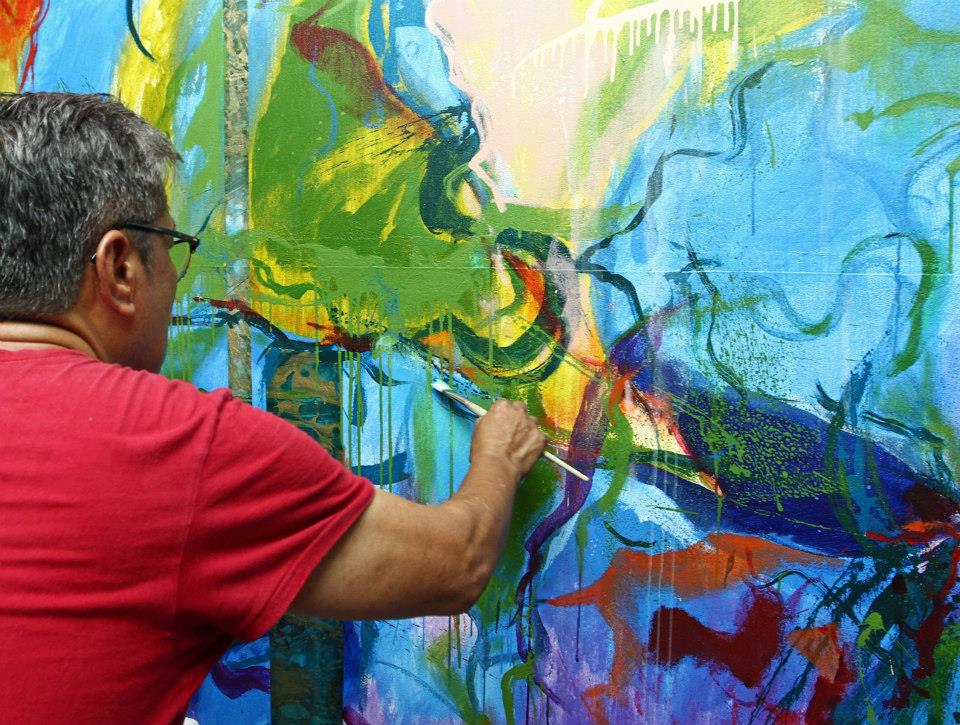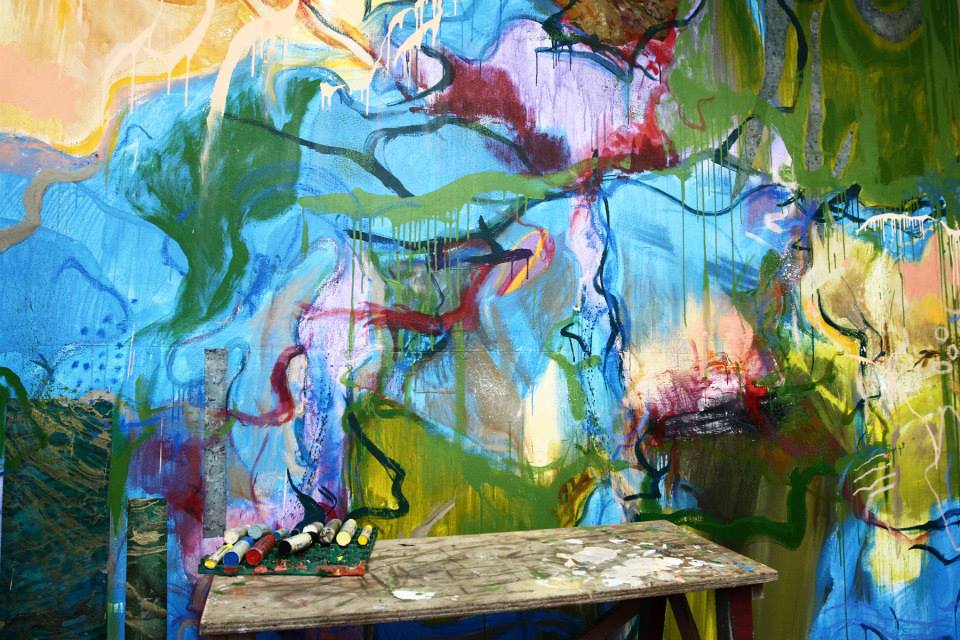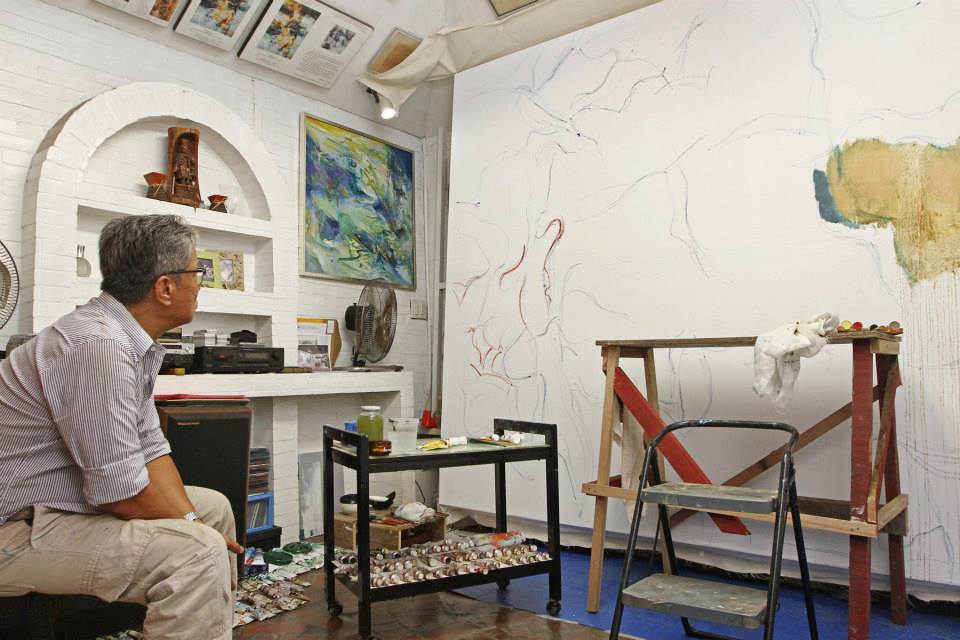The Will, the Way and the World according to Edwin Wilwayco
Written by: John A. Magsaysay
Date: April 7, 2014
MANILA, Philippines - From the heart, I ask God, ‘Use my hands, my mind and my eyes.’ I cannot paint or hold my brush without saying a prayer. It is my proper beginning,” the artist Edwin Wilwayco admits, a modest maker looking to his Master as muse. With a prolific, world-renowned career behind him, a total of 14 solo exhibitions to match a lustrous 46-year repertoire, it is hardly believable that the inexhaustible abstract expressionist has not outgrown his pious devotion, to match what some artist as successful as he may have developed, the inflated ego. But Wilwayco has remained steadfast in his divine inspiration, a remnant of which, a prayer, hangs omnipresent on his waiting easel.
Wilwayco has gone through a lot of convictions, and while they may not be as recognizably represented in his dynamic brush strokes, strident textures, and vivid palettes, each one is as instrumental as the last. “In 1979, I had a show on the Philippine flag, as my flag series. The flag and its evolution were discernible in my paintings. I was young, and it was a critical success, but I only sold one painting from day one until the third year,” Wilwayco recounts of his first solo exhibition, while brimming with patriotic fervor, his art failing to strike the pulse of national interest. “At that time, I almost gave up on painting and just wanted to concentrate on advertising work,” he adds. If there was one thing good to transpire from it, however, it was Wilwayco’s acceptance as a British Council scholar for painting in 1982.
“There, my professor advised me, ‘When you go back to your country, why don’t you look for something very Filipino.’ So I opted to paint jeepneys, and that’s how I came up with my ‘Jeepney Fantasia’ series,” explains Wilwayco, his monumental comeback at the old Ayala Museum preludes the success of his other returns to come. The neon frenzy of jeepneys laden with vinyl stickers and multicolored kitsch, their sculptural quality fashioned off stainless steel offered a fantasy off the Filipino everyday trademark. From there, amidst the tropical landscape of his garden home, Wilwayco started to build on his “Heliconias and Birds of Paradise” series, which too, became a simmering sensation.
This newfound fixation on nature has sparked other well-received showcases, his latest one, the “In Nature’s Realm” series which debuted at the Gallery Duemila in 2012. “People don’t realize that even with nature, when you zoom into something like a leaf, it looks so abstract. No one can capture, or be close to the color combinations of nature. There are so many surprises that we tend to ignore. We just have to pay attention to the nuances — the blend of colors, the rock formations, or the leaves in trees,” Wilwayco’s tiny details giving way to monolithic imaginings heaving with fertile life, movement, and emotion.
“I’m adventurous; somehow, I like exploration. I always want to change my surroundings,” Wilwayco admits, that his nature series was stirred by the lush landscapes of two opposite continents, one, in his New England backyard, where he spends his time with wife Loby and daughter Moma in their Rhode Island residence, and the other one, in his Paranaque home where Wilwayco has built the verdant oasis of equatorial foliage. On these two coasts, Wilwayco divides his time painting, building an abundant body of work that awaits collectors, critics, and comeuppance.
“It’s the only way I am comfortable with. It should come as though I’m not working at all, as though I’m only playing. And the fact that I am able to make a connection with collectors with the paintings that I make is the most gratifying response. As long as I sincerely believe that I am happy doing it, that I pour my heart into it, whether it would take one year or two years for that painting to be bought and appreciated, it has proven its merit, for me,” Wilwayco states, his style never dictated by his success.
“I have to please myself, that’s my gauge. I have to rely mostly on my feelings. There’s always this danger when someone sells too well, they tend to stick to a certain formula. I don’t look at my painting as a roll of textile, like, ‘Do you need two yards, three yards?’ You have to offer something different. If you don’t like this particular yard, there is always someone else who will,” he explains. It also helps that the constant spring of inspiration doesn’t run dry for Wilwayco, picking up insights from the wayward branch to the whimsical melodies of classical sonatas.
“Music will always be a part as long as I’m painting. I’m moved by music. But I’ve tried, many times, painting with popular music, Broadway, or trance, and they don’t work for me. But classical music, especially orchestra, solo or duets, moves me. It feels like I’m transported in time. I try to emulate the speed, the tempo of these compositions,” he reveals, his “Homage to Vivaldi” and “Scherzo” series a visually-audible response.
His penchant for the orchestral and its composers mimics the way he views his talent. “I can say I was classically-trained. I can do portraits, I can do landscapes. When you’re a musician, you can do improvisation if you are classically-trained — whether it’s jazz or popular music. Doing abstract work is a challenge because it’s making a painting I haven’t seen before. I don’t make studies, and it depends on my feeling,” he notes. Like melodies built with the progressions of tones, rhythms, and instruments, Wilwayco composes with a feeling, a flourishing palette, and a flight of fancy; the results are nothing short of symphonic.
But just like his Mozart, Schubert, or Vivaldi, he knows better than to over-deliver. “Doing abstract opens up to a lot of accidents. When do I exercise restraint? When do I back off and not meddle too much? If I try to do too much, it will be destroyed,” he confesses, and this ascendency to self-editing has brought to life many quintessential Wilwayco pieces, whether it’s the spot-lit magnum opus at the Chabot Gallery in Providence, or the masterwork mural at the Crimson Hotel.
After having exhausted his earthly influences, Wilwayco transcends to the realm of the sacred in giving his latest series a new light. Titled “Recalibration,” Wilwayco’s fresh-off-the-studio collection will be showcased in Singapore this July, and it promises to be quite the revelation. “I am recalibrating in such a way that I am not paying homage to nature anymore. Is it veering towards being very abstract? Is it too mechanical? I cannot imagine what art critics will say or how my audience will look at my new work. Definitely, I can assure you, I will learn so much from how you see it. As long as you like my painting, then I will be very happy with that. You and I will have very different positions, will find different things on my paintings, and I leave it to you to see what you want to see,” he confesses.
If you see a sliver of hope, a slice of heaven, or even the face of God, it shouldn’t come as a surprise, because that is the miracle Wilwayco is building on. Having gone full circle from capturing life’s intricacies to the infinite world of the divine, perhaps Edwin Wilwayco has found yet another well of inexhaustible encouragement.
“Art will always be a reflection of God’s creation. We cannot even come close to what He created, but we can always offer a sampling. I admire so many artists, and all of them have their own strengths, and you realize that God won’t give you everything, but you have all these artists combined and there is so much wonderful art in the world. God really is the supreme artist,” he states.
Source: http://www.philstar.com











